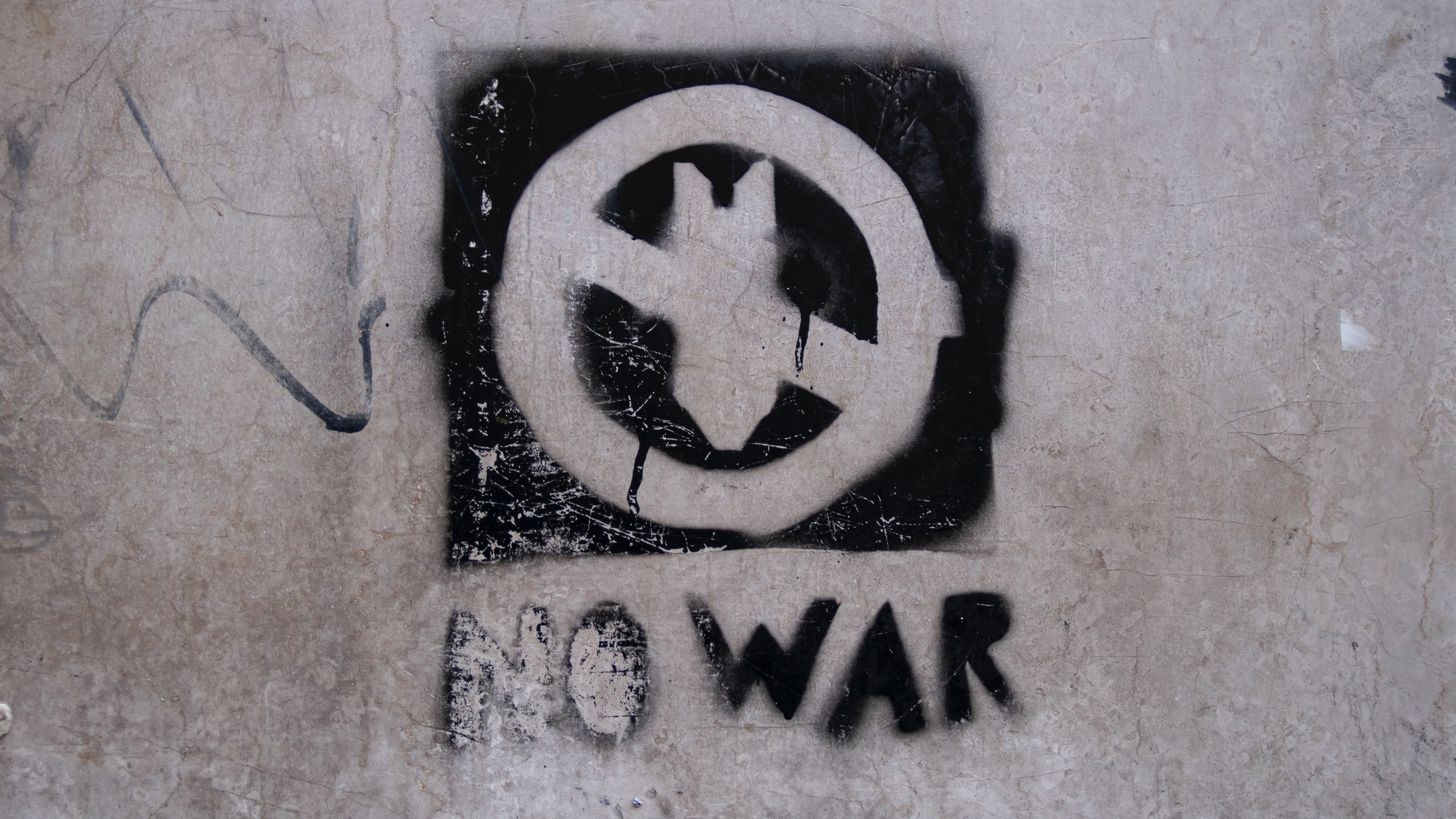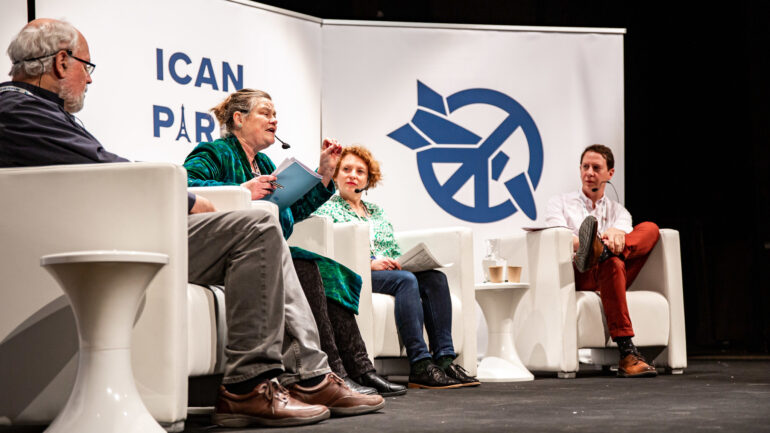Seth Shelden argues that neither 1983 nor 1962 were the only times the world had been close to a nuclear end. There were many other times that civilization stared into the abyss, often unaware.
“The reason we haven’t been in a nuclear war is less likely deterrence and more likely luck,” said Shelden, who is the U.N. liaison for the International Campaign to Abolish Nuclear Weapons (ICAN), with 635 partners in 107 countries worldwide. It won a Nobel Peace Prize in 2017 for its activism and its work in securing the Treaty on the Prohibition of Nuclear Weapons.
An example of that luck occurred In 1983 as the Cold War raged. Stanislav Petrov was the officer in charge of the Soviet Union’s missile attack warning system and picked up a signal on his radar of incoming missiles from the United States.
Within mere minutes, he was able to calm his nerves, decide the fate of the world and confirm it was an error in the system.
Shelden suggests this wasn’t the first or last time such a close call took place when dealing with these world-ending weapons. The Cuban Missile Crisis in 1962, for example, also brought the world to the edge of nuclear conflict.
“There are hundreds of incidents that are known with nuclear weapons and many more that aren’t known,” he said. “There is a danger every day that any of the leaders of these nine nations can do something catastrophic, that’s the reality of a world with nuclear weapons.”
According to the Federation of American Scientists, the nine nuclear powers — Russia, U.S, France, Britain, Pakistan, India, China, North Korea, and Israel — have amassed a total of 12,700 nuclear warheads. Russia leads with 5,997 in its inventory and the U.S. having the most deployed strategically at 1,644.
“Although nuclear weapons are fewer than they were at the height of the Cold War when there were over 70,000 or so, there are more of them deployed and they have higher yields than a lot of the weapons we had back then,” Sheldon said.
Fat Man and Little Boy devoured Nagasaki and Hiroshima with blast yields of 22 kilotons and 15 kilotons respectively. They devastated the cities with radioactive consequences that are felt even today.
Modern bombs are powerful.
Shelden argues nuclear weapons create an inability to engage countries with nuclear weapons from committing acts like the Russian invasion of Ukraine.
“Thousands of people are dying right now. And that’s in part because Russia has nuclear weapons,” Shelden said. “It’d be an incredible folly not to take this as an opportunity to work towards disarmament in a meaningful way.”
Proxy wars are another consequence of the existence of nuclear-armed states,” Shelden said.
“The U.S. and Russia had proxy conflicts all over the world throughout the Cold War, as one example,” he said.
Joshua Pollack, senior research associate at the Middlebury Institute of International Studies and editor of the Nonproliferation Review, was a child of the Cold War and realized early the looming danger of nuclear exchange.
“In the 1990s when I was in graduate school, I realized the chances of nuclear exchange had never really gone away since the Cold War,” Pollack said.
In terms of today’s tension that is often compared to the Cold War, Pollack says a factor that must be considered is the danger of invasion.
“The conquest of countries is one of the few scenarios that might justify a resort to nuclear weapons,” he said. “North Korea in particular expresses that thought by saying they have nuclear weapons because of what Americans did in Iraq, and other places in overthrowing the governments.
“The recent case with Ukraine validates some of these judgments,” he said. “Can countries like Georgia, Ukraine, or Moldova acquire nuclear weapons? Sure, they could. But it would endanger their relations with the West.”
The reciprocation countries would face from breaking the Treaty on the Non-Proliferation of Nuclear Weapons, a landmark 1968 treaty signed by 191 states and made indefinite in 1995, would be too enormous.
“For a country that is trying to modernize, trying to develop its economy and depends heavily on trade relations, they will find other ways to protect themselves,” Pollack said.
As far as total disarmament, he doesn’t see it happening for now.
“It’s a goal that’s espoused by America, Russia, France, Britain, and China, which are the five nuclear-armed states that are in the non-proliferation treaty, but no one is really moving in that direction right now,” Pollack said.
Allison Pytlak, manager of the disarmament programme at the Women’s International League for Peace and Freedom (WILPF), urges nuclear weapons are not simply a problem of the past but of today.
WILPF is a feminist organization that has tackled violence in all forms since 1915 identifying patriarchy, militarism, and neoliberalism as three key items to pluck to move towards peace.
“It’s always important to push disarmament, and not just retroactively or after something ‘bad’ has happened,” she said. “Weapons are created to kill or maim. We need to learn from the past and not repeat mistakes over again.”
Pytlak said youth are much more aware of the dangers in their world and are continuing the fight for peace.
“We are seeing a burgeoning youth movement in nuclear disarmament who are also connecting the nuclear threat with its implications for the climate and in relation to colonialism and anti-racism work,” she said.
“I believe that the majority of people do not want to see their fellow person hurt or harmed and are opposed to violence. I think the structures around us need to change though in order to better set the conditions for peace,” Pytlak said.


